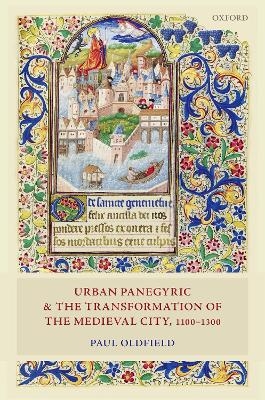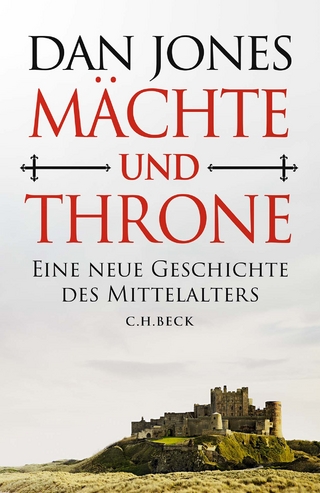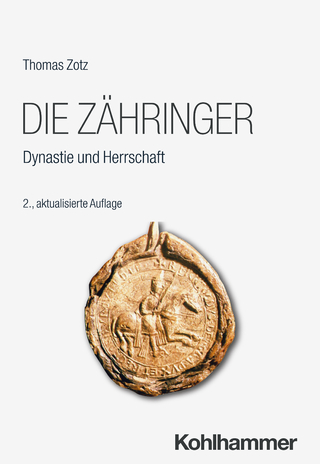
Urban Panegyric and the Transformation of the Medieval City, 1100-1300
Seiten
2019
Oxford University Press (Verlag)
978-0-19-871773-7 (ISBN)
Oxford University Press (Verlag)
978-0-19-871773-7 (ISBN)
The first extensive analysis of the function and significance of urban panegyric, a flexible literary genre which enjoyed a marked and renewed popularity in the Central Middle Ages. Oldfield connects urban panegyric to major underlying transformations in the medieval cities of England, Flanders, France, Germany, Iberia, and Italy.
This study offers the first extensive analysis of the function and significance of urban panegyric in the Central Middle Ages, a flexible literary genre which enjoyed a marked and renewed popularity in the period 1100 to 1300. In doing so, it connects the production of urban panegyric to major underlying transformations in the medieval city and explores praise of cities primarily in England, Flanders, France, Germany, Iberia, and Italy (including the South and Sicily). The volume demonstrates how laudatory ideas on the city appeared in extremely diverse textual formats which had the potential to interact with a wide audience via multiple textual and material sources. When contextualized within the developments of the twelfth and thirteenth centuries these ideas could reflect more than formulaic, rhetorical outputs for an educated elite, they were instead integral to the process of urbanisation. In Urban Panegyric and the Transformation of the Medieval City, 1100-1300, Paul Oldfield assesses the generation of ideas on the Holy City, on counter-narratives associated with the Evil City, on the inter-relationship between the City and abundance (primarily through discourses on commercial productivity, hinterlands and population size), on landscapes and sites of power, and on knowledge generation and the construction of urban histories.
Urban panegyric can enable us to comprehend more deeply material, functional, and ideological change associated with the city during a period of notable urbanization, and, importantly, how this change might have been experienced by contemporaries. This study therefore highlights the importance of urban panegyric as a product of, and witness to, a period of substantial urban change. In examining the laudatory depiction of medieval cities in a thematic analysis it can contribute to a deeper understanding of civic identity and its important connection to urban transformation.
This study offers the first extensive analysis of the function and significance of urban panegyric in the Central Middle Ages, a flexible literary genre which enjoyed a marked and renewed popularity in the period 1100 to 1300. In doing so, it connects the production of urban panegyric to major underlying transformations in the medieval city and explores praise of cities primarily in England, Flanders, France, Germany, Iberia, and Italy (including the South and Sicily). The volume demonstrates how laudatory ideas on the city appeared in extremely diverse textual formats which had the potential to interact with a wide audience via multiple textual and material sources. When contextualized within the developments of the twelfth and thirteenth centuries these ideas could reflect more than formulaic, rhetorical outputs for an educated elite, they were instead integral to the process of urbanisation. In Urban Panegyric and the Transformation of the Medieval City, 1100-1300, Paul Oldfield assesses the generation of ideas on the Holy City, on counter-narratives associated with the Evil City, on the inter-relationship between the City and abundance (primarily through discourses on commercial productivity, hinterlands and population size), on landscapes and sites of power, and on knowledge generation and the construction of urban histories.
Urban panegyric can enable us to comprehend more deeply material, functional, and ideological change associated with the city during a period of notable urbanization, and, importantly, how this change might have been experienced by contemporaries. This study therefore highlights the importance of urban panegyric as a product of, and witness to, a period of substantial urban change. In examining the laudatory depiction of medieval cities in a thematic analysis it can contribute to a deeper understanding of civic identity and its important connection to urban transformation.
Paul Oldfield is a Senior Lecturer in Medieval History at the University of Manchester. His research focuses on Medieval Southern Italy during the Norman and Staufen periods, on urban communities, and on sanctity. His publication's include City and Community in Norman Italy (2009) and Sanctity and Pilgrimage in Medieval Southern Italy, 1000-1200 (2014), as well as numerous articles and essays. He has been awarded research fellowships from the AHRC and the British Academy.
Introduction
1: The Sources: an overview
2: Interpretation and Audience
3: The Holy City
4: The Evil City: urban critiques
5: The City of Abundance: commerce, hinterland, people
6: Urban landscapes and Sites of Power
7: Education, History, and Sophistication
Conclusion
Bibliography
| Erscheinungsdatum | 10.01.2019 |
|---|---|
| Reihe/Serie | Oxford Studies in Medieval European History |
| Verlagsort | Oxford |
| Sprache | englisch |
| Maße | 164 x 236 mm |
| Gewicht | 490 g |
| Themenwelt | Geisteswissenschaften ► Geschichte ► Allgemeines / Lexika |
| Geschichte ► Allgemeine Geschichte ► Mittelalter | |
| Geisteswissenschaften ► Geschichte ► Regional- / Ländergeschichte | |
| ISBN-10 | 0-19-871773-3 / 0198717733 |
| ISBN-13 | 978-0-19-871773-7 / 9780198717737 |
| Zustand | Neuware |
| Informationen gemäß Produktsicherheitsverordnung (GPSR) | |
| Haben Sie eine Frage zum Produkt? |
Mehr entdecken
aus dem Bereich
aus dem Bereich
eine neue Geschichte des Mittelalters
Buch | Hardcover (2023)
C.H.Beck (Verlag)
38,00 €


